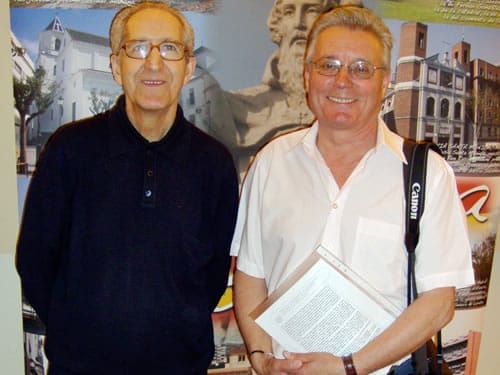The purpose of the show, according to the author, was “to narrate briefly the story of our elders that should not be left covered by the dust of oblivion”. Necessarily it had to be done in outline form because to collect a century of virtue, wisdom and knowledge in two exhibit rooms was impossible. “For this reason,” insisted Cerezal, “not all those that should have been included were presented, not all names that form part of the authentic treasure of the province were extensively treated”.
It was not an exposition of photography in the technical sense. The artistic value of the photos was relegated to the secondary term. The criterion that prevailed in the preparation of the exhibit was “the collection and the giving of life to some images that contain pieces of life, experience and sanctity,” said Fr. Cerezal.
The exhibit was housed in two large parlors of the residence, Hospitalicos, located at Elvira St. in the center of capital city of Granada. Shown were 87 works in black and white with a uniform format of 30×40 centimeters and mounted on a 40×50 centimeter frame. They were arranged thematically in 8 chapters and followed adequately a chronological order. The first group was dedicated to personalities of greatest influence in the life of the Order and of the province. This was followed by the group of images of the first prior provincial, the residences and the expansion of the province in Brazil. Next, one could see the pictures of the foundation in Argentina with the parishes, the seminary and the college. The fifth group was about the mission of Labrea, followed by the mission of Marajo, the arrival at Venezuela, the formation in Germany and educational apostolate. The last chapter was dedicated to present communities as well as to the last reunions of the governors of the province.
Panels
Together with these small sparks of religious life captured by cameras within the last century, the commission in-charged of the exhibit also prepared ten panels of different sizes to depict the actual situation of the province. The actual state of the communities was presented in five panels. Two exhibit boards showed the new pastoral activities: the youth and the secular fraternity. The other three were dedicated to some religious who, within the century were known for their spirituality, virtues and learning. All exhibit boards contained captions that were prepared by the Augustinian Recollect poet, Juan Cuesta.



